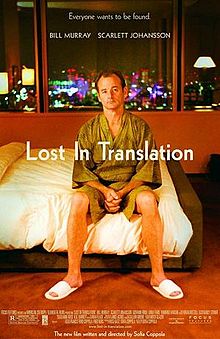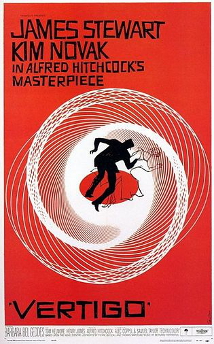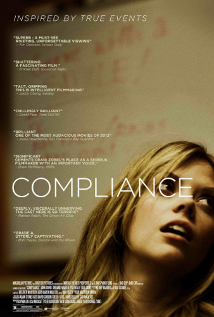So I am going to try to watch as many Oscar nominated films as possible before the big day two weeks from now. Who knows what the future will bring in terms of my schedule, however, so I may not get to blog about it. If all goes well, I will be able to write at least one more post which will mean I’ve had time to watch at least one or two more films before the big night.
The King’s Speech (2010)
Dir. Tom Hooper, 121 min., in theaters
Hooper is not stranger to period pieces, directing two period television series that involve the personal trials and tribulations of great men and women of history. I was fortunate to catch a bit of Terry Gross’ interview with Tom Hooper and it may have biased my viewing of the film since Colin Firth’s (King George VI, “Bertie”) method approach to embodying the character and speech manner of George VI was fascinating. The big buzz in method acting this year centered around Natalie Portman in Black Swan and Christian Bale in The Fighter, but Firth deserves at least as much if not more credit for his performance in this film.
In a nutshell, George VI (Firth) becomes king of England in the period leading up to WWII after his self-absorbed and definitively un-Royal brother Edward VIII (Guy Pierce) abdicates to marry a divorcee. George’s wife, Elizabeth (Helena Bonham Carter) arranges the help of a speech therapist, Lionel Louge (Geoffrey Rush) to help remedy George’s debilitating stammer which prevents him from confidently performing his functions as the figurehead of British society.
The film benefits from an inspiring real life story, and the storytelling within the film keeps a brisk pace and lends a dire gravity to what would ordinarily be yet another Oscar-bait, palace intrigue story. Rush was much maligned for chewing up the scenery in this film, but I found his performance to be within the bounds of the character, whose flamboyant therapeutic methods were a perfect match for the actor. Touching moments abounded throughout, and I found myself genuinely in suspense of the outcome and desperately rooting for his success.
An additional bonus was the gorgeous cinematography. Most every shot was a visual treat. This would ordinarily strike me as a film that need not be seen in theaters, but viewing this film at home will not do it justice. In a bit of cinematic irony, we see characters in the film spacing themselves out from microphones only to have the camera bossily push its way into the faces of Firth and Rush. Dividing the screen into thirds, the film presents close ups that juxtapose visually intriguing patterned backdrops with Firth’s (and Rush’s) pained facial expressions. One of my favorite releases of 2010.
9/10
The Social Network (2010)
Dir. David Fincher, 120 min., on DVD
Two things: First, just because it’s about Facebook doesn’t mean it will be interesting or that I’ll care. Second, no one talks like this in real life.
Going from a touching rendition of one man’s brutally difficult struggle to be heard to a Aaron Sorkin script hardly seems fair to this film, but life isn’t usually fair, as the characters of The Social Network find out.
If you have to explain to me why I should believe that the dialogue you’re presenting to me is believable as human intelligible speech then perhaps it needs to be toned down (“Having a conversation with you is exhausting. It’s like dating a stairmaster”–just one instance of many awkwardly explanatory lines). If Sorkin has tried to prove one thing with his writing, it’s that people hash out ideas in fast-paced, borderline maniacal speech sprints that shove rapid-fire witty retorts down your throat. Putting my dislike of Sorkin’s view of the world aside (if I can), the film still was a disappointment to me, perhaps due to excessive buildup.
The Social Network is less the story of Facebook and more the story of Mark Zuckerberg (Jesse Eisenberg), and the film really struggles to come to some conclusions about his character. The events that happen throughout the course of the film were mostly window dressing for a character analysis of, as the film’s closing captions tell us, the world’s youngest billionaire. As such, everything has to be extreme: extreme work sessions, extreme Harvard snobbery, extreme coincidences (Zuckerberg happens to move in next door to Sean Parker, Napster creator played well by Justin Timberlake) and, of course, extreme partying (a zip line from the chimney into the pool, really? It’s like a Mountain Dew commercial, a beverage which was product placed right into the movie, EXTREEEEEMMMMEEEEE DUDE!).
In a very non-critical appraisal, I just wasn’t feeling the film. I again admit that I dislike Sorkin’s unique style of writing, but that wasn’t the only thing bothering me. Most of the reviews I read/heard were praising this film for making a deposition interesting, but it just wasn’t. The two depositions could have been struck from the film for all I care, as the storyline proceeded in chronological order anyway and didn’t need any added layers of commentary telling me when to feel what. Why were they included? I guess for more Zuckerberg character development.
Was the timing right for a biopic of Zuckerberg either? Where is this source material coming from? Like the litigators in the film, is someone picking through the Harvard Crimson for this stuff? There were a lot of wasted opportunities for commentary on the ways that Facebook has changed our lives (with the notable exception of a great relationship status message bit). This film was less a study of the triumph of a megalithic social networking site than a character study on why Mark Zuckerberg is an ass (with one lawyer at the end regrettably spelling it all out for us: “You’re not an asshole…you’re just trying to so hard to be one”). I don’t know many billionaires, but I’m guessing that being an ass is par for the course, and I didn’t need a two hour lesson in why that’s the case.
6/10
Restrepo (2010)
Dirs. Tim Hetherington, Sebastian Junger, 93 min. (unofficial), on Netflix Instant
In The Things They Carried, Tim O’Brien writes that “a true war story isn’t moral.” Hetherington and Junger’s Restrepo tries to buck that trend by interjecting a lot of sentimentality and positive story trajectories into their film. However, as a documentary, whose to say that isn’t the way the story went?
Firstly, the only way you can really review a film like this and criticize the artistic merits of the film is to first separate the subject from the presentation. There’s no shortage of respect for the sacrifice of armed service members here, which is really the only way you can tell the story. However, along with an accurate representation of modern warfare and the struggles that our soldiers face fighting in Afghanistan, there are some disturbing undertones of how the story is presented.
This film comes off like a gnomon, leaving me with a sense that something more profound is missing from the presentation; perhaps out of respect for the sacrifices made by the soldiers, or perhaps to mitigate the senselessness of war. In either case, the filmmakers do themselves no favors by holding back. Surely the brutality of war is well represented in the film, but the sanctimonious justifications of the soldiers is not, as one would expect, thrown into sharp relief with the hopelessness of their fight. It seems like everything the soldiers in this film built will fall apart, but the film tries to go out on a high note, which I felt was undeserved given the climate surrounding the Afghanistan war this year.
I’m not sure my full attention was arrested by this film either. In terms of subject matter, the film comes off as disorganized and thrown together (dates might have been helpful in laying out the storyline). Perhaps this was a commentary on disorganized nature of human conflict and war.
However, the film ultimately redeems itself in the raw footage that the intrepid filmmakers were able to capture and put together. Funded by Nat Geo, this film (as in all of their projects) has a “being there” quality that makes it worth the experience. As a closing thought, this really is an experiential documentary, focusing on putting you in the shoes of the subjects and leaving the explication of the issues for post-viewing homework.
6/10
 Dir. Sofia Coppola, 101 min., Netflix Instant
Dir. Sofia Coppola, 101 min., Netflix Instant


